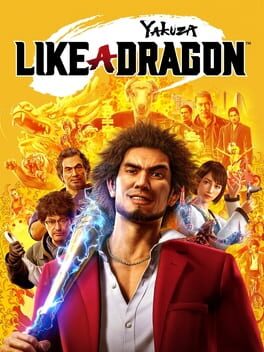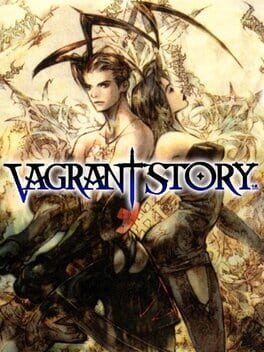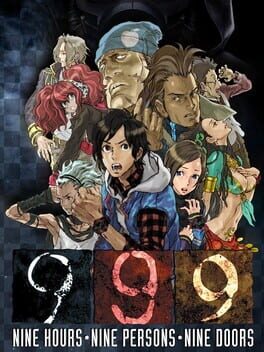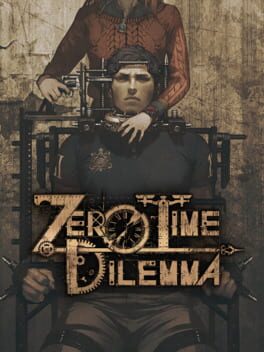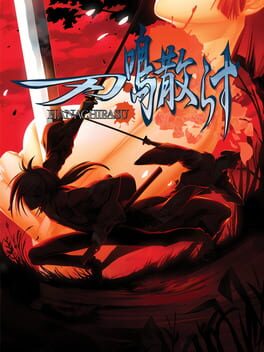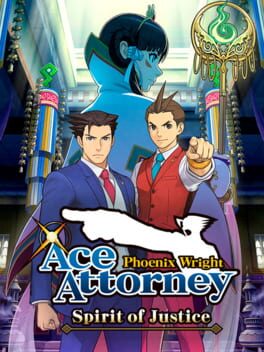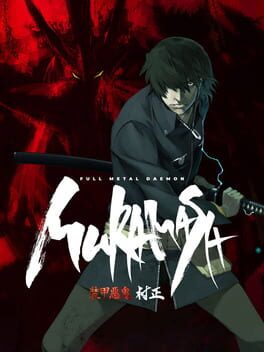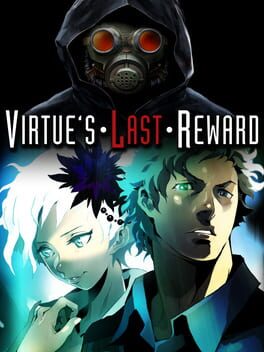slimemasterzero
2018
You can kind of see that they tried to adapt the Metroidvania style into 3D with this one, but every level just feels like a series of rooms and hallways. The game is still pretty fun besides that though. Also the music goes really hard thanks to THE BASED Michiru Yamane.
+1 point for having dual audio in 2003.
+1 point for having dual audio in 2003.
Aria improves on Harmony of Dissonance in... basically every way. The spritework, music, and gameplay are all much better in this game. The Soul mechanic is a pretty interesting replacement for the subweapons and it gives you a much wider variety of tools. This makes up for Soma's movement not being quite as fluid as Alucard's, or even Juste's, which gives him a more unique playstyle compared to most other Castlevania heroes. Soma is also just a really cool character in general. I really like his story and the ways he interacts with the other characters.
If Aria was on something more powerful than the GBA I think it could be as good, if not better than SOTN, but as it is the game is pretty good.
If Aria was on something more powerful than the GBA I think it could be as good, if not better than SOTN, but as it is the game is pretty good.
2000
This is probably one of the best looking games on the PS1 on a technical level, and aesthetically one of the best looking I've ever played. Akihiko Yoshida's art is already great, but the way his designs were adapted into the game's character models is seriously impressive. They used every trick they could think of to make the characters as expressive as possible, while using half the polygon count that FF7 and 8 did, and it's especially impressive considering the team had never worked with 3D graphics before this.
I hyped this game up for myself for a long time just based on the art style, but I had no idea how it actually played until I started. Surprisingly, the combat was also pretty great. Most of the "hard" part of the game is just being prepared, and having the right weapons for any given situation. The attribute system is cool in that it allows you to specialize and customize your weapons for use against specific enemies. I didn't mess with the crafting very much, but I imagine there's even more depth and weapon customization to be found there. The actual combat is engaging on its own, but if you're doing things right, boss fights and encounters shouldn't take very long, especially if you make use of everything you have available to you.
The story is interesting, fairly straightforward but there's a lot of things that aren't explained outright, or that are left for you to think about. Still, I wouldn't say it was hard to follow despite that, and the cutscene direction and aesthetics were strong enough that it didn't bother me.
Overall, really great game. It has a lot of unique aspects that I think it pulls off really well, and the total package isn't quite like anything I've played before.
TLDR: Sydney Losstarot is literally me 10/10
I hyped this game up for myself for a long time just based on the art style, but I had no idea how it actually played until I started. Surprisingly, the combat was also pretty great. Most of the "hard" part of the game is just being prepared, and having the right weapons for any given situation. The attribute system is cool in that it allows you to specialize and customize your weapons for use against specific enemies. I didn't mess with the crafting very much, but I imagine there's even more depth and weapon customization to be found there. The actual combat is engaging on its own, but if you're doing things right, boss fights and encounters shouldn't take very long, especially if you make use of everything you have available to you.
The story is interesting, fairly straightforward but there's a lot of things that aren't explained outright, or that are left for you to think about. Still, I wouldn't say it was hard to follow despite that, and the cutscene direction and aesthetics were strong enough that it didn't bother me.
Overall, really great game. It has a lot of unique aspects that I think it pulls off really well, and the total package isn't quite like anything I've played before.
TLDR: Sydney Losstarot is literally me 10/10
999 is, as the title suggests, a game about nine persons who have nine hours to go through nine doors. This is basically a VN with occasional puzzle segments in which you're locked in a room and have to find a way out. The puzzles are not very difficult for the most part, but there were a few towards the end that combined aspects from the previous rooms to make more engaging puzzles that actually took me a while to figure out.
I think the main appeal of this game is the story, and it definitely delivers on that front. It takes a while though for things to get interesting, but it really picks up when you start to figure out why you're trapped on the ship, and how the characters are related to each other. Another interesting aspect is the branching story, where each choice you make has the chance to change the ending you get. It's ideal to play all of the bad endings before going for the true end, but only one of them is actually required.
The presentation is also pretty good, I really enjoyed the voice acting for all of the characters and it helped endear them to me a lot. Music is good, although most of the tracks are kind of forgettable I think it does its job to set the mood and atmosphere well enough.
I played this on Vita, which most people say its an inferior version because of the way the game uses both screens on the DS, but I had it switched to novel mode almost the entire time so I don't think I really lost anything. Either version seems good to me, but I definitely like how well it uses the DS's gimmick.
I am giving this game a 999/1000.
I think the main appeal of this game is the story, and it definitely delivers on that front. It takes a while though for things to get interesting, but it really picks up when you start to figure out why you're trapped on the ship, and how the characters are related to each other. Another interesting aspect is the branching story, where each choice you make has the chance to change the ending you get. It's ideal to play all of the bad endings before going for the true end, but only one of them is actually required.
The presentation is also pretty good, I really enjoyed the voice acting for all of the characters and it helped endear them to me a lot. Music is good, although most of the tracks are kind of forgettable I think it does its job to set the mood and atmosphere well enough.
I played this on Vita, which most people say its an inferior version because of the way the game uses both screens on the DS, but I had it switched to novel mode almost the entire time so I don't think I really lost anything. Either version seems good to me, but I definitely like how well it uses the DS's gimmick.
I am giving this game a 999/1000.
The music and aesthetics of this game are really great. Richter's character design is iconic, and I especially love how he looks in the anime-style cutscenes, which are also a cool touch.
Gameplay is pretty fun, if a bit frustrating because I suck at old platformers like these. Still, the game is pretty short so the difficulty doesn't bother me all that much. There's also a decent amount of side stuff because of the branching paths, so you can go the straightforward route or explore a little bit. Overall, just a really cool game.
Gameplay is pretty fun, if a bit frustrating because I suck at old platformers like these. Still, the game is pretty short so the difficulty doesn't bother me all that much. There's also a decent amount of side stuff because of the branching paths, so you can go the straightforward route or explore a little bit. Overall, just a really cool game.
This game took me way too god damn long to finish but it's pretty good.
This game has a pretty unique battle system, and while I can see why it might not be for everyone I found it to be very fun. Getting to the point where your party members will easily wipe out groups of enemies is extremely satisfying, but it does take a bit of work to get there. Obviously there are basic RPG things to consider like team building and gear and all that, but you have to set up your gambits just right so that your party will do what you want them to in the correct order, so you don't have to worry about giving them commands manually.
I can understand why people wouldn't like the automation, but I find it really interesting. It's like programming your party members, in a sense. It puts a greater emphasis on coming up with strategies before you go into a fight, and then executing on them, rather than making decisions in the middle of battle. The main story content isn't very hard for the most part, but for a lot of the late-game hunts and espers, you'll definitely need to pay more attention to how your gambits are set up.
The story was a little hard for me to follow, which is mostly my fault because I had this game on hold for like six months, but the main cast are all very likeable and all have their own goals and motivations for going on this journey. Vaan feels the most like he's just along for the ride, but he has some good moments and development by the end.
In conclusion, I am THE Basch fon Ronsenberg of Dalmasca! BASCH LIVES!!
This game has a pretty unique battle system, and while I can see why it might not be for everyone I found it to be very fun. Getting to the point where your party members will easily wipe out groups of enemies is extremely satisfying, but it does take a bit of work to get there. Obviously there are basic RPG things to consider like team building and gear and all that, but you have to set up your gambits just right so that your party will do what you want them to in the correct order, so you don't have to worry about giving them commands manually.
I can understand why people wouldn't like the automation, but I find it really interesting. It's like programming your party members, in a sense. It puts a greater emphasis on coming up with strategies before you go into a fight, and then executing on them, rather than making decisions in the middle of battle. The main story content isn't very hard for the most part, but for a lot of the late-game hunts and espers, you'll definitely need to pay more attention to how your gambits are set up.
The story was a little hard for me to follow, which is mostly my fault because I had this game on hold for like six months, but the main cast are all very likeable and all have their own goals and motivations for going on this journey. Vaan feels the most like he's just along for the ride, but he has some good moments and development by the end.
In conclusion, I am THE Basch fon Ronsenberg of Dalmasca! BASCH LIVES!!
Being the third game in the Zero Escape series, you probably know what to expect by this point. However, this is different from the first two in that it completely ditches the VN-style presentation for more cinematic cutscenes. This doesn't really pay off very well considering the animations are pretty bad. You can tell they had like no budget when making this game because the presentation is a big step down. The models themselves look fine, though I do miss the Kinu Nishimura designs of the first two games.
The story structure is quite a bit different from VLR, where instead of every choice splitting off into a new branch, the flowchart is sort of random. You don't know beforehand where on the timeline each scene takes place, (assuming you're not using a guide) so it's like filling in pieces of a puzzle, the puzzle in this case being the flowchart. It's an interesting direction, but not a straight upgrade from VLR since there are fewer branching points.
Now, about the story itself... it's okay, I guess. It starts off really interesting, but it gets kind of ridiculous towards the end. It's cool to see events that were alluded to in VLR play out, and I enjoyed a lot of the character moments, but some of the twists are just bizarre. There are also a lot of unintentionally funny moments because of the awkward animations. I can't decide if the big reveal at the end is really stupid or actually genius.
I wouldn't say ZTD was disappointing, in fact I enjoyed it more than I thought I would, but it's really not as good as the first two. There are parts that I'm not sure were planned from the beginning, or if they were decided last minute because of budget/time constraints. I guess you could say, "Life is simply unfair..."
🐌/10
The story structure is quite a bit different from VLR, where instead of every choice splitting off into a new branch, the flowchart is sort of random. You don't know beforehand where on the timeline each scene takes place, (assuming you're not using a guide) so it's like filling in pieces of a puzzle, the puzzle in this case being the flowchart. It's an interesting direction, but not a straight upgrade from VLR since there are fewer branching points.
Now, about the story itself... it's okay, I guess. It starts off really interesting, but it gets kind of ridiculous towards the end. It's cool to see events that were alluded to in VLR play out, and I enjoyed a lot of the character moments, but some of the twists are just bizarre. There are also a lot of unintentionally funny moments because of the awkward animations. I can't decide if the big reveal at the end is really stupid or actually genius.
I wouldn't say ZTD was disappointing, in fact I enjoyed it more than I thought I would, but it's really not as good as the first two. There are parts that I'm not sure were planned from the beginning, or if they were decided last minute because of budget/time constraints. I guess you could say, "Life is simply unfair..."
🐌/10
2005
1997
Spirit of Justice was actually so much better than Dual Destinies on almost every level. For one, half the cases aren't boring as fuck this time. There are actually some interesting mysteries and fun characters in this one, and the new Insight mechanic is pretty neat.
The overarching story is where this game really shines though. The premise sounds stupid at first; Phoenix travels to a country where lawyers are literally illegal, but somehow they managed to make it interesting. The Kingdom of Khura'in is pretty well fleshed out, and the trials that take place there are differentiated by the Seances that show the victim's last memories before they died. Above all else, SoJ finally gives REAL development to Apollo, something DD seriously failed to deliver on.
Overall, maybe not the best game in the series, but surprisingly pretty good. One of the more plot heavy and unique entries for sure.
The overarching story is where this game really shines though. The premise sounds stupid at first; Phoenix travels to a country where lawyers are literally illegal, but somehow they managed to make it interesting. The Kingdom of Khura'in is pretty well fleshed out, and the trials that take place there are differentiated by the Seances that show the victim's last memories before they died. Above all else, SoJ finally gives REAL development to Apollo, something DD seriously failed to deliver on.
Overall, maybe not the best game in the series, but surprisingly pretty good. One of the more plot heavy and unique entries for sure.
VLR is, as the title suggests, a game about virtue... and its rewards. Well, I guess they can't all have super self-descriptive titles like 999.
Anyway, if you've played 999 you should probably know what to expect from this one. The story plays out in a VN-style presentation, you make choices, and then solve puzzles to escape from a room. Most of the puzzles this time around are actually a bit harder than in the first game. Also, each room now has two passwords: one to get the key to the exit, and one that gives you a secret file with bits of extra information. The secret files range from actually interesting to stuff you already knew, or that is going to be explained by the story right after you leave the room. Still, it's a cool mechanic that makes you think of alternate solutions to the puzzles.
The story flowchart is also upgraded from the original game. Every choice will move you to a different branch, which means there are a lot more different endings this time. However, instead of a handful of bad endings and then a true end, like in 999, you have nine character endings, and 15 more bad endings. This results in a total of 24 possible endings, with a surprising amount of variety. This also means that going for every ending would take a very long time, so just do the main nine if you're not up for that.
The story is compelling early on because of how many questions it presents. All of those questions get answered by the end, making for a satisfying ending, but I can't help but feel 999's story was a lot more focused, and had a better cast of characters. VLR has a lot of crazy plot twists, which can be a positive or a negative for some people.
Overall, VLR exceeded my expectations but it's hard for me to say I prefer it over the first game. They're both great games and have different strengths and weaknesses compared to each other.
Now I can't wait to suffer when I play Zero Time Dilemma.
Anyway, if you've played 999 you should probably know what to expect from this one. The story plays out in a VN-style presentation, you make choices, and then solve puzzles to escape from a room. Most of the puzzles this time around are actually a bit harder than in the first game. Also, each room now has two passwords: one to get the key to the exit, and one that gives you a secret file with bits of extra information. The secret files range from actually interesting to stuff you already knew, or that is going to be explained by the story right after you leave the room. Still, it's a cool mechanic that makes you think of alternate solutions to the puzzles.
The story flowchart is also upgraded from the original game. Every choice will move you to a different branch, which means there are a lot more different endings this time. However, instead of a handful of bad endings and then a true end, like in 999, you have nine character endings, and 15 more bad endings. This results in a total of 24 possible endings, with a surprising amount of variety. This also means that going for every ending would take a very long time, so just do the main nine if you're not up for that.
The story is compelling early on because of how many questions it presents. All of those questions get answered by the end, making for a satisfying ending, but I can't help but feel 999's story was a lot more focused, and had a better cast of characters. VLR has a lot of crazy plot twists, which can be a positive or a negative for some people.
Overall, VLR exceeded my expectations but it's hard for me to say I prefer it over the first game. They're both great games and have different strengths and weaknesses compared to each other.
Now I can't wait to suffer when I play Zero Time Dilemma.
About on par with Aria, or maybe a little bit better. Dawn pretty much plays like Aria, except with improved visuals and music. The Magic Seal mechanic is also new, but it's really just a gimmick that uses the DS touch screen, and didn't need to be there.
Yoko's new weapon upgrade shop sounds good on the surface, letting you spend souls in order to improve weapons that aren't very good at first. However, the drop rate for enemy souls in this game is extremely low, and it's not worth trying to grind for the specific souls you need, so she ends up not being very useful. She and Hammer at least have funny/interesting stuff to say when you talk to them.
Also, I do kind of like the anime-styled portraits. They're very expressive, and they fit the aesthetic of this game well enough. Still, I'd be lying if I said I didn't miss the Ayami Kojima art from Aria and the older games.
Yoko's new weapon upgrade shop sounds good on the surface, letting you spend souls in order to improve weapons that aren't very good at first. However, the drop rate for enemy souls in this game is extremely low, and it's not worth trying to grind for the specific souls you need, so she ends up not being very useful. She and Hammer at least have funny/interesting stuff to say when you talk to them.
Also, I do kind of like the anime-styled portraits. They're very expressive, and they fit the aesthetic of this game well enough. Still, I'd be lying if I said I didn't miss the Ayami Kojima art from Aria and the older games.


